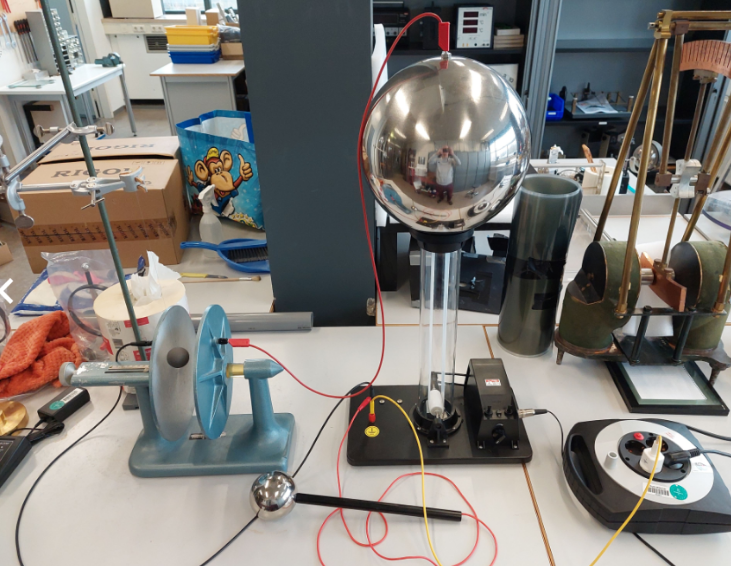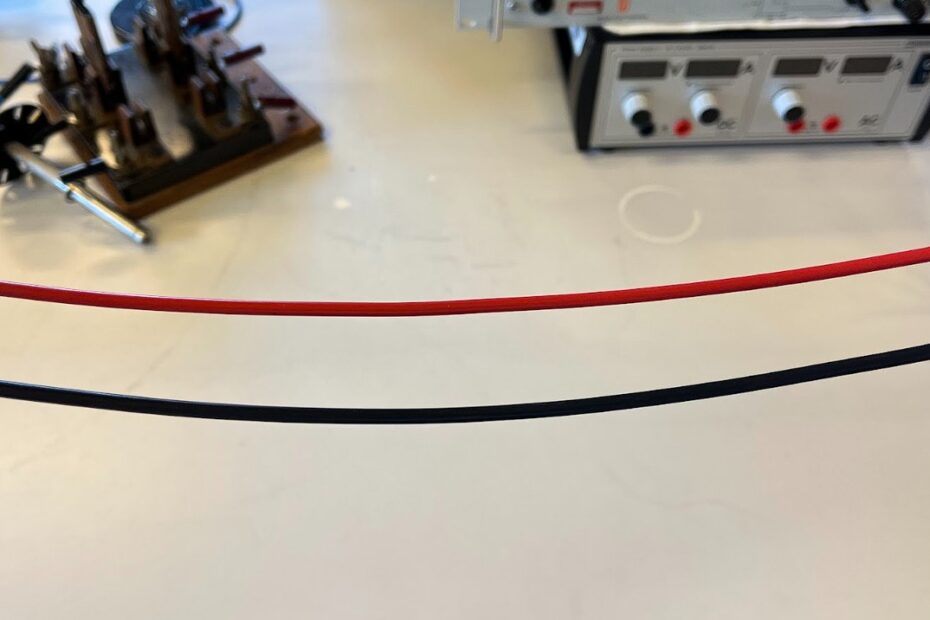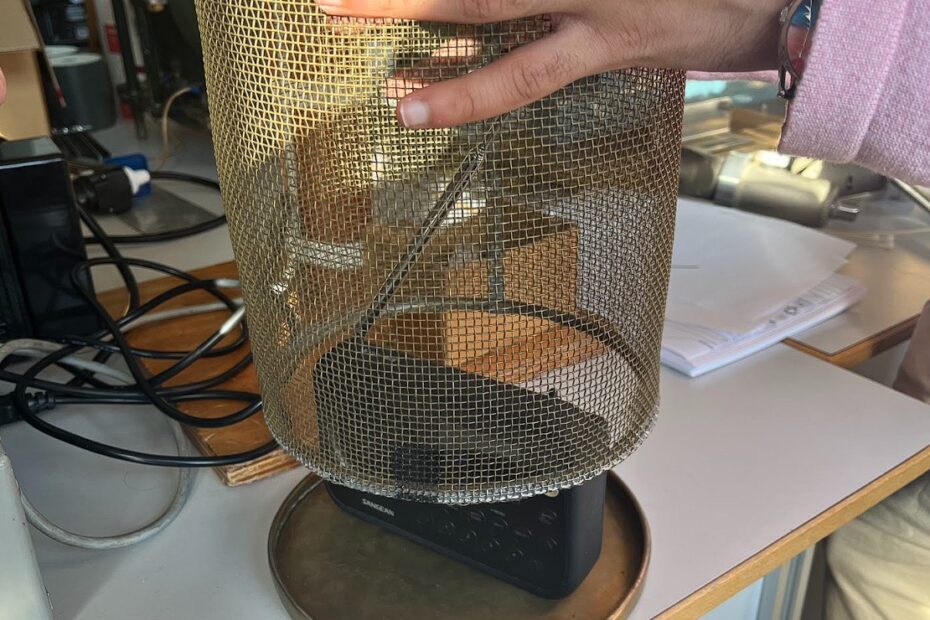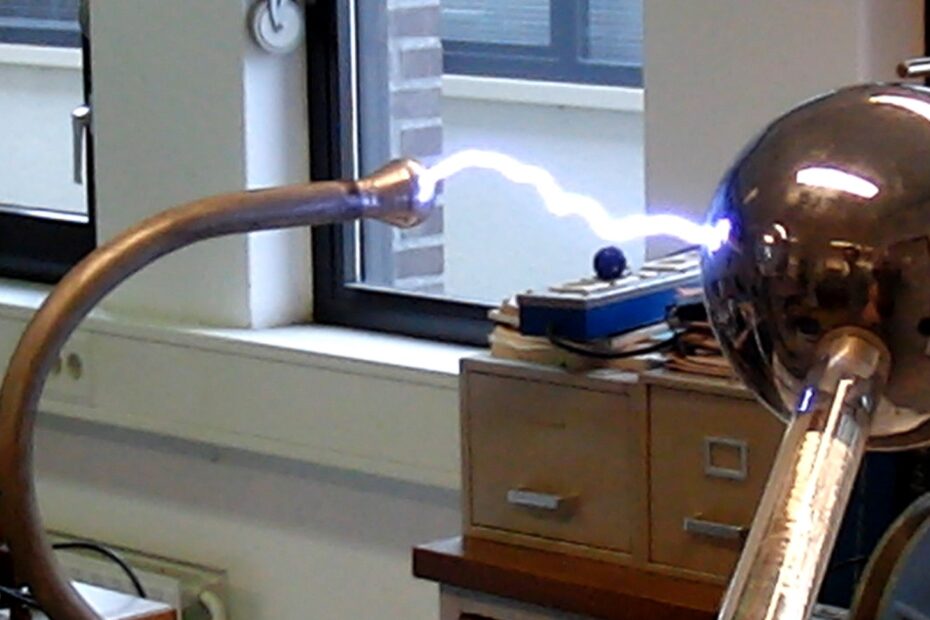7B13.50 – UV fluorescence
This demonstration illustrates absorption and fluorescence of differently coloured materials using UV light. It is also suitable for demonstrating scintillate materials and their working principle.
One of the electroscopes in the photographs suffers from static friction. Gently tap it to release the needle and you will see the needle deflecting.









